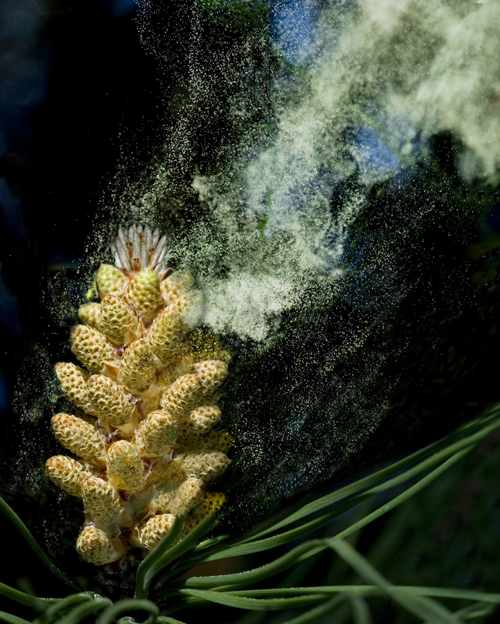Wind Pollination (Anemophily)

When pollen is transported by wind, this is called anemophily.
Many of the world's most important crop plants are wind-pollinated. These include wheat, rice, corn, rye, barley, and oats. Many economically important trees are also wind-pollinated. These include pines, spruces, firs and many hardwood trees, including several species cultivated for nut production.
Wind-pollinated plants do not invest in resources that attract pollinating organisms, such as showy flowers, nectar, and scent. Instead, they produce larger quantities of light, dry pollen from small, plain flowers that can be carried on the wind. Female structures on wind pollinated plants are adapted to capture the passing pollen from the air, but the majority of the pollen goes to waste.
